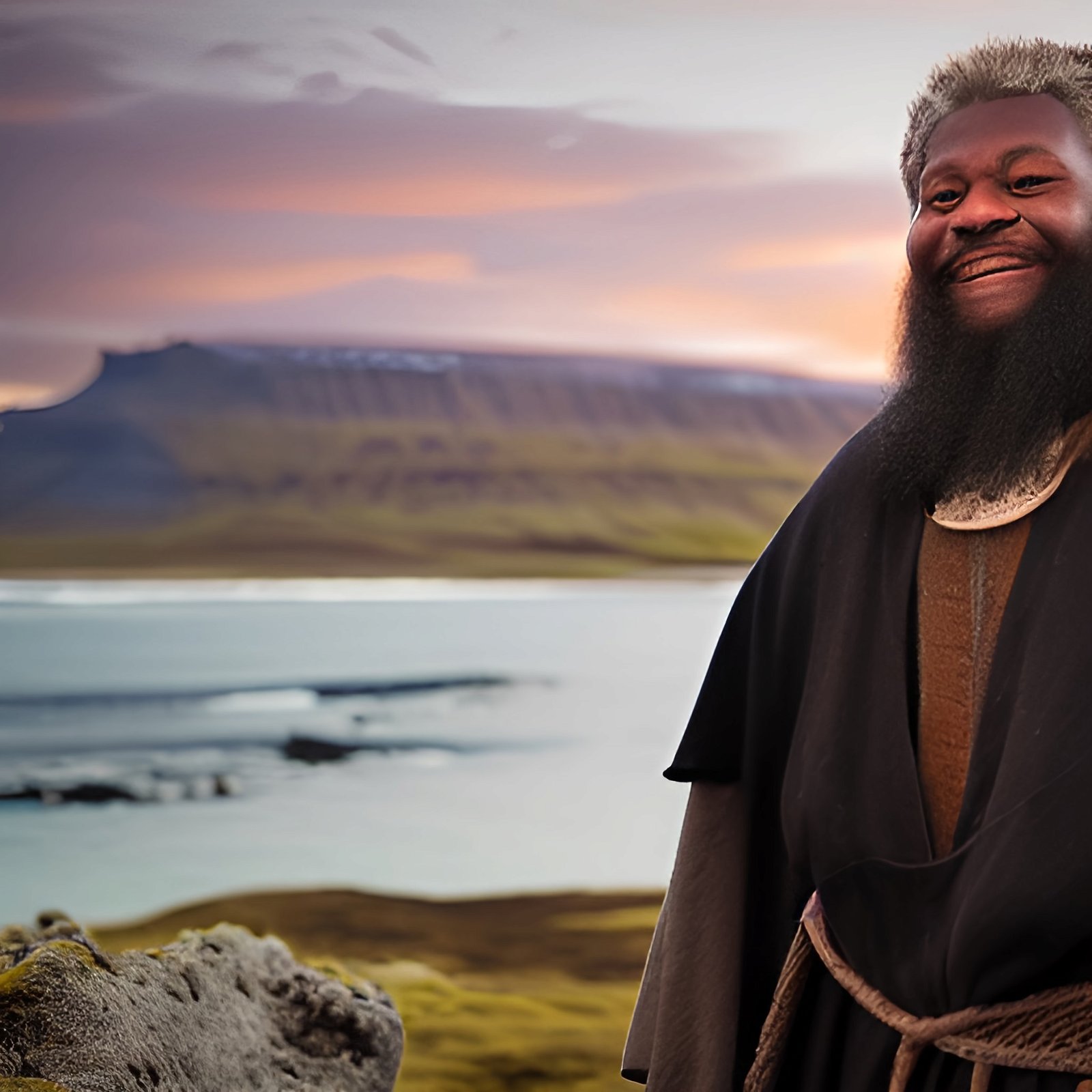
When I had made my first batch of 25 Fantasy Old Norse/Viking NPCs (non-player characters), I was terribly proud and excitedly showed them to my role playing and gamer friends. I got generally positive feedback, but two important points of criticism:
- There are too few Christian characters
- The characters aren’t ethnically diverse
I thought about both aspects a lot. And while I concluded that religion wasn’t my main focus, because it can easily be superimposed on the characters at the game master’s needs (more in depth discussion here), the second point had me worried. I had taken care of having equal amounts of male and female characters, I had a potentially queer character, I had children and old people, rich and poor people, some Irish ancestry, BUT my fantasy characters were all white. I had managed to fall not into one, but two traps.
The first and most obvious trap could have been avoided by reading the sentence that begins with “my fantasy characters” more closely. There is a reason I give my vikings the fantasy label. None of them is a “real” person, and none of them can be one, because they don’t exist. So I could make them wear horned helmets (but why though??), make them build a zeppelin (steam vikings… 🤔) or make them South-East Asian.
My second fallacy is the one I find hardest to admit, because it’s so blatantly obvious that absence of evidence is not evidence of absence. Up until recently it had been assumed – from textual evidence – that the vast majority of settlers of Iceland had been from Norway, Sweden and Denmark. Recent genetical examinations of the people of the settlement period have shaken this belief.
[…] today’s Icelanders have a much higher proportion of Scandinavian genes than their distant ancestors did.
Michael Price in his article about the study, 👉 “Iceland’s founding fathers underwent a rapid, 1000-year genetic shift“, in Science Magazine
The study found 75% of the male settlers and, even less, only 62% of the female settlers to have had Nordic ancestry. The lion’s share of the remainder had Gaelic roots. There could be much more diversity. The sample size has been very small so far, only 27, because there aren’t that many settlement period burial mounds in Iceland that have been dug up. Also, in unearthing these bodies and subjecting them to genetical examinations, we still have to factor in survivor bias (pardon the pun, I know they’re dead.) People who got a burial mound were wealthy people as a rule. So, 75% of the males who A. got a burial mound that was B. well-preserved and C. has been found and analyzed have Nordic ancestry. This doesn’t say anything about poor people, slaves, Christians, and so on.
So, even without playing the “it’s fantasy anyway” card I can and will make ethnically diverse Old Norse characters. And while it’s super fun to think of where they might have met, how they could have gotten into business or have formed family ties, there has been one factor that has severely hampered my progress, and that’s their names. Because I strive for names adequate for the period, I need to do the same with Basque names, Moorish names, Turk names, and I have no expertise whatsoever in that field.
If you can help me with these languages, please send me an e-mail or post a comment! I would be so grateful.
Here is the link to the 👉 genetical study in Science magazine.
And a shout-out to Katja and Jonas who pointed out the flaws of my concept.
If you want to take a deeper dive into diversity in Iceland’s society in the years 1100 to 1400, you might start with Sverrir Jakobsson’s article, where he tries to find some answers to questions like
How open was Icelandic society to people from another society or even a different ethnic background? Which features of the society facilitated integration, and which elements obstructed the process? Was Iceland an open society compared to other societies at other times?
Sverrir Jakobsson: Strangers in Icelandic Society 1100-1400, in: Viking and Medieval Scandinavia, Vol. 3 (2007), pp. 141-157. Available on 👉 JSTOR
And some general tips from me on how to come up with ideas for Old Norse characters, and then how to name them.


